How much do you know about the color change of aquaculture water?
What is the color of the water
I believe that the majority of farmers may simply understand that it is water color, but some farmers may not know how to identify and maintain water color, which refers to the color of substances dissolved in water (including natural metal ions, pigments of sludge humus, microorganisms and plankton, suspended residual bait, organic matter, clay or colloid, etc.) in the sun. Among them, plankton and benthos have the greatest influence on water color.
The culture water color includes two aspects: the culture of unicellular algae and the culture of beneficial microorganisms.
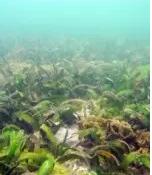
Second, the advantages of excellent water color
1. Increase dissolved oxygen in water
two。 Stabilize water quality and reduce the content of toxic substances in water
3. Provide natural high quality bait
4. Reduce transparency, inhibit the growth of filamentous algae and bottom algae, and provide a good growth environment to avoid enemy damage.
5. Stable water temperature
6. Inhibit the growth of harmful bacteria and algae.
A good water color marks the dynamic balance of fungi, algae and zooplankton.
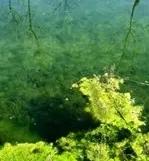
Third, the classification of water color-- excellent water color.
1. Diatoms: Brown, brown
The water quality is more "fertile and lively" and the fertility is moderate. The algae in the water are diatoms, such as Chaetoceros, rhomboid, Phaeodactylum tricornutum, etc., these algae are excellent bait, in addition, there are round sieve algae, navicular algae. The breeding objects living in this environment have strong vitality, bright and clean body color, good digestion and absorption, and fast growth.
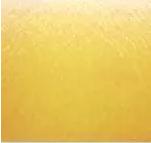
Brown water

Tea brown water quality
two。 Green algae: light green, emerald green, dark green
(1) Light green and emerald green
The water quality is "tender and cool", the transparency is 20cm to 35cm, and the fertility is moderate.
The algae in the water are green algae, such as Chlorella, Chlamydomonas and so on. Green algae can absorb a lot of nitrogen fertilizer in the water and purify the water quality.
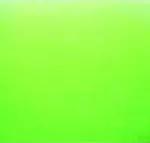
Light green
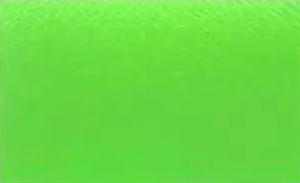
Emerald green
(2) dark green (thick but not turbid)
Mostly appeared in the middle and later stages of culture, the water quality is relatively thick, the transparency is about 10 centimeters, and the algae are mainly green algae. The water quality is fatter, but it is lively and cool. There are few suspended particles in the water, and the water quality is stable, which is helpful to reduce the stress response to the environment and climate change.
3. Mixture of silicon and green algae: yellowish green.
This kind of water is the symbiotic color of diatoms and green algae. It is generally believed that "diatom water is unstable and green water is not rich", while yellow-green water has the advantages of both diatom water and green algae water with stable color and rich nutrition.
Yellowish green
The water quality of the above excellent water color is cool, bright and lively. The spray from the aerator is white, and if there is foam, it will dissipate quickly.
Dangerous water color
1. Green and turbid: turquoise, dark green
(1) turquoise or dark green
Blue-green algae or microcystis multiply in large numbers in the water, the water quality is thick and turbid, and the transparency is 20 cm. There are a few green suspended fine particles on the surface of the water downwind. This is most likely to happen in aging ponds, and it is easy to turn into "copper green water". This kind of water body can still survive, but it is necessary to regulate and control the water quality, otherwise the water quality is aging, a large number of algae die and float on the surface, and the incidence of shrimp increases.
Turquoise, old green
(2) Gray green, grayish blue or dark green
The concentration of harmful algae is high, it begins to die, and the water surface shows oil slick dirt.
The above two kinds of water quality are thick, turbid and dead, and the water is sticky and slippery; the spray from the aerator is light green or light blue; it is easy to have foam and the foam is long, so it is difficult to disappear.
two。 Red and turbid: sauce red, black red
(1) Sauce red or brick red
There are a large number of protozoa or red tide organisms in the water.
Sauce red
(2) Black brown or soy sauce
It mainly contains dinoflagellate, gymnoalgae and so on. This water color is due to improper management, such as too much feed and too much residual bait feces, resulting in an increase in solubility and suspended organic matter. The water is extremely eutrophicated, and the water quality and sediment are extremely aging. Due to the secretion of toxins by some bad algae, aquatic organisms are poisoned, and the bottom quality is deteriorated, and the incidence is very high.
Dark brown
The above two kinds of water quality are thick, turbid and dead, and the water is sticky and slippery; the spray caused by the aerator is light red or light black; it is easy to have foam and the foam is long, so it is difficult to disappear. There is a fishy smell in the water and bottom.
3. Yellow and turbid: yellow, yellow mud color
(1) Yellow
It mainly contains dinoflagellate, chrysophyta and other flagellates. The organic matter that has been accumulated in the pond for a long time is easy to produce this water color by bacterial decomposition.
Yellow water
(2) turbidity, stratification and yellow mud color
① pseudo-turbidity: there are diatoms, brown algae, or green algae in the water at the same time, and when there are a large number of them, the color of the water looks a little cloudy, but it is actually the color of a mixture of several algae. Can use a transparent cup to beat a glass of water, rest for a few minutes, if you can not see the precipitation, or do not change much in the morning and evening, and are between 4-8 mg / L, belong to pseudo-turbid.
Turbid water, yellow mud water
The water of ② pool is layered and turbid: there is a certain water color in the upper layer and turbidity in the bottom layer. This situation is common in the overwintering greenhouse, and the main reasons for this phenomenon are large temperature difference, clear water quality, unstable bacterial phase and algal phase in water, improper use and collocation of aerator.
③ pool water is evenly turbid:
a. Improper use of drugs, such as some disinfectants to kill algae.
b. The water quality is aging and bottoming out.
c. The water level is shallow, caused by wind and rain, or by shrimp stirring the sediment.
4. White and turbid: milky white
Harmful microorganisms or zooplankton multiply excessively in the water, algae are eaten by zooplankton, resulting in anoxia and excessive activity of zooplankton, or there are more ciliates, rotifers, copepods and clay particles or organic debris in the water.
White turbid water
5. Moss water: filamentous algae water, green moss water, mud skin water
Due to various reasons, the water can not be fertilized for a long time, resulting in moss.
Moss water
- Prev
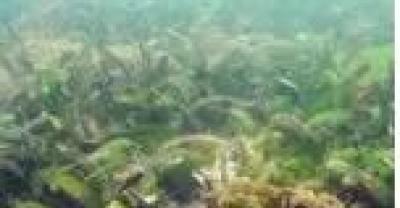
Blue snow farming methods see here
When we choose pots for plants, it is best to choose those that are relatively large, because we know that this plant belongs to...
- Next
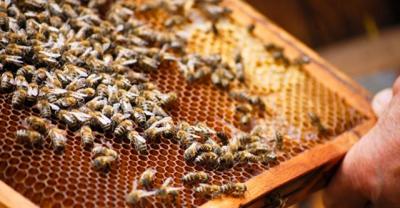
A simple artificial hatching method for aquaculture soft-shelled turtle
There are many hatching methods for soft-shelled turtles. For those small-scale breeding units or self-employed enterprises that do not have constant temperature facilities, self-made incubators are mainly made to control humidity.
Related
- On the eggshell is a badge full of pride. British Poultry Egg Market and Consumer observation
- British study: 72% of Britons are willing to buy native eggs raised by insects
- Guidelines for friendly egg production revised the increase of space in chicken sheds can not be forced to change feathers and lay eggs.
- Risk of delay in customs clearance Australia suspends lobster exports to China
- Pig semen-the Vector of virus Transmission (4)
- Pig semen-the Vector of virus Transmission (3)
- Five common causes of difficult control of classical swine fever in clinic and their countermeasures
- Foot-and-mouth disease is the most effective way to prevent it!
- PED is the number one killer of piglets and has to be guarded against in autumn and winter.
- What is "yellow fat pig"? Have you ever heard the pig collector talk about "yellow fat pig"?

